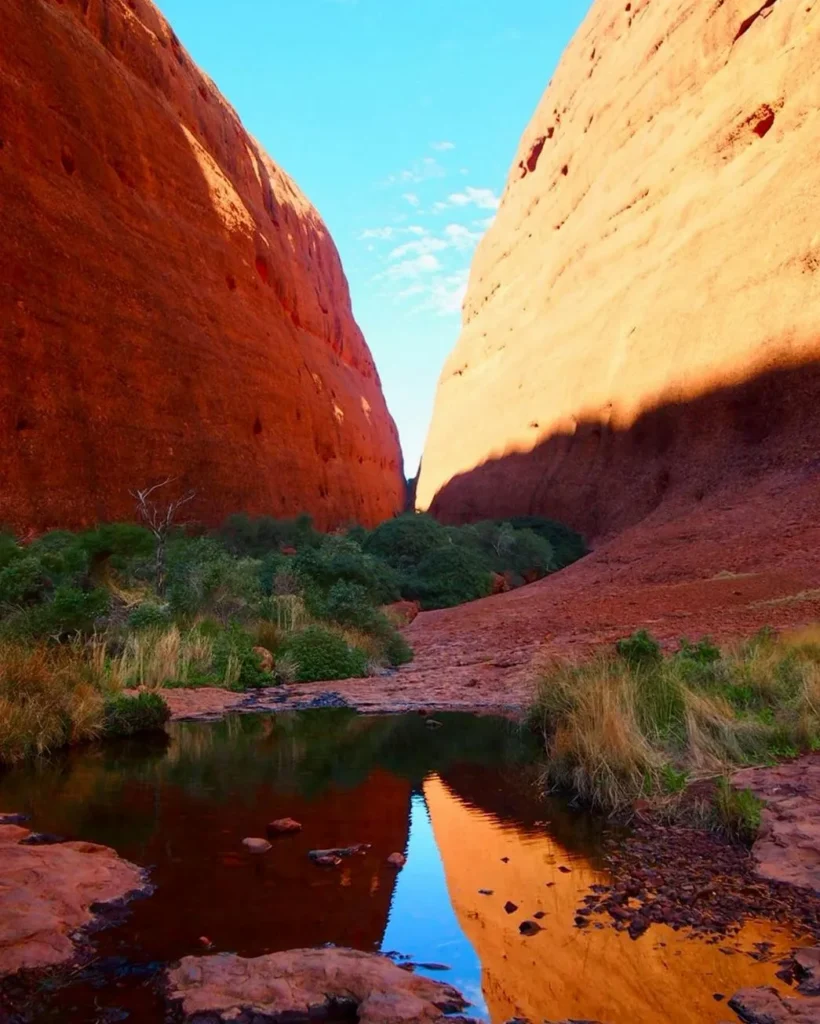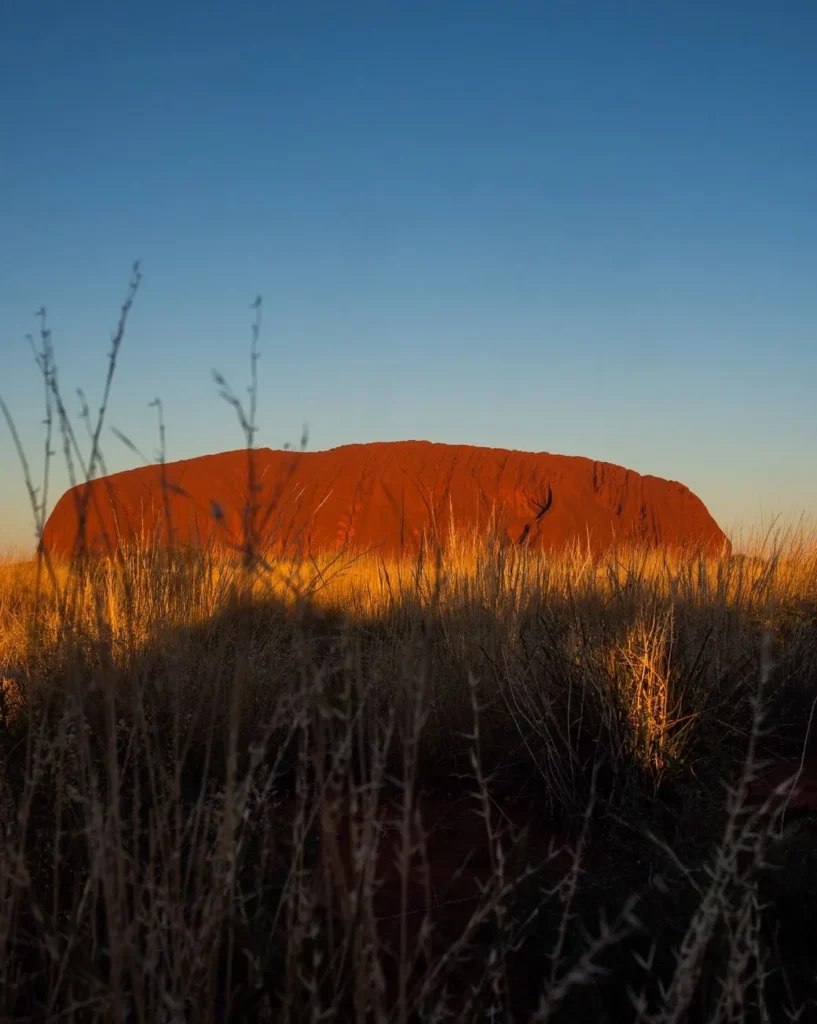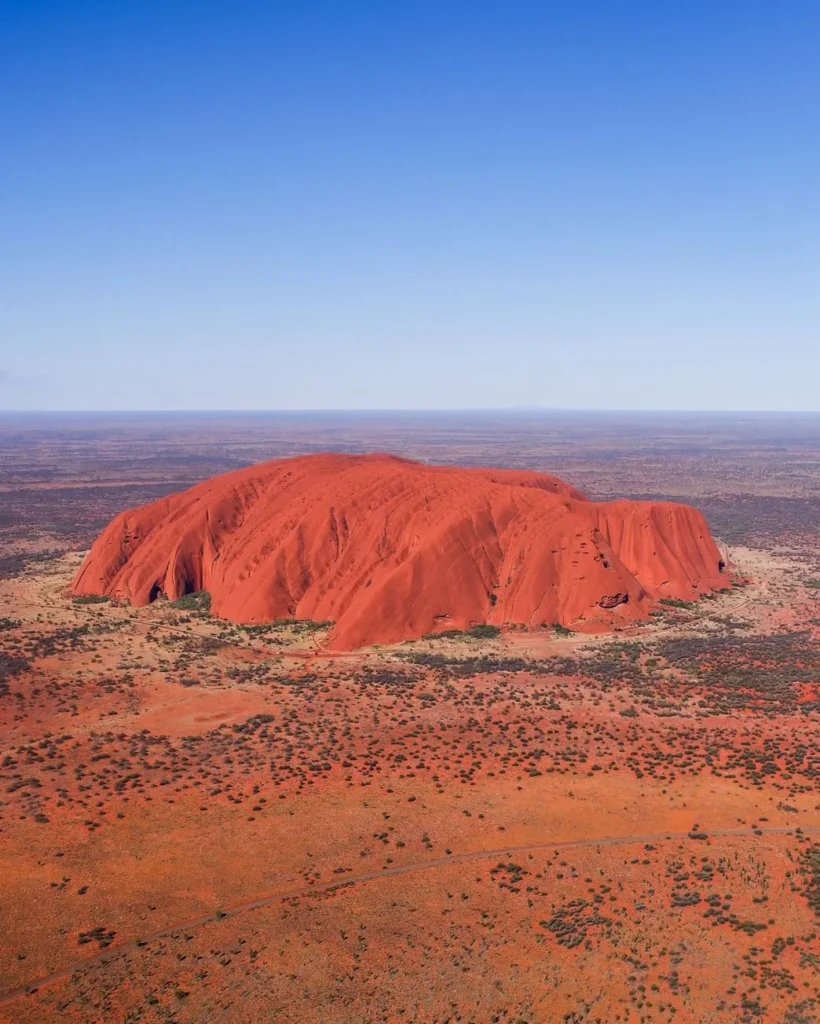Ayers Rock (also known as Uluru) is an icon of Australia’s natural and cultural landscape. Located in the Northern Territory near Alice Springs this sandstone monolith is a familiar sight in Central Australia. Beautiful and spiritual Uluru is more than just a geological formation, it’s a sacred site for the Aboriginal people, particularly the Anangu, the traditional owners. As a UNESCO World Heritage Site Uluru attracts visitors from all over the world making it one of Australia’s top attractions. Here are five facts that reveal its cultural significance, unique features and why you should visit.
Facts about Uluru
1. Uluru is a Sacred Site for the Anangu

For the Anangu Uluru is a sacred site deeply embedded in Aboriginal culture and history. Its cultural significance is based on Tjukurpa, or Dreamtime stories, which tell of the creation process and the spirits of dozens of ancestral beings who formed the land, plants and animals. The rock’s caves and rock formations have ancient paintings that tell these stories and reinforce its spiritual significance. Visitors are asked to respect the sacred sites by following the designated paths and learning from Parks Australia and the Anangu guides. The area also has ceremonial poles, sacred waterholes and other important indigenous sites for the traditional owners.
2. It Changes Colour Throughout the Day

Uluru’s magic is in its ability to change colour depending on the time of day and weather. Made of arkose sandstone the rock’s mineral composition reacts to the sun and changes to fiery red, orange and purple at sunrise and sunset. This, combined with temperature extremes and seasonal changes, shows the rock is dynamic. In heavy rain Uluru is darker and water cascades down the rock creating temporary waterfalls that make it even more beautiful. These changes are a reflection of its role in the desert landscape as a natural wonder and living symbol of the creation period.
3. It’s Bigger Than It Looks

Although it’s 348m h,gh, Uluru goes down much deeper underground, making it the world’s largest monolith. The visible part of this island mountain is 9.4km around but the whole thing includes a vast network of underground layers of sand and sandstone. This massive structure is the result of an ancient episode of mountain building and geological activity making it a geologist’s dream. Compared to other similar formations like Mount Olga (part of Kata Tjuta) and Mount Augustus in Western Australia, Uluru is a one-off in the Australian landscape.
4. Climbing Uluru Is Prohibited

Since 2019, climbing Uluru has been prohibited due to the Anangu people’s wishes and the conservation values of the site. The Anangu consider climbing the rock to be deeply disrespectful to the spiritual essence of the rock which includes forms of people believed to be ancestors frozen in stone. The Australian Department of the Environment and Water Resources also highlights the environmental impacts of foot traffic, including erosion of the arkose sandstone and damage to the ecosystem. Instead visitors can explore the base of the rock with Autopia Tours Australia, guided walks and cultural experiences that will give you an insight into its Aboriginal history and traditional owners.
5. It’s Part of a Dual World Heritage Site

Uluru-Kata Tjuta National Park is a dual UNESCO World Heritage Site, recognised for its cultural and natural values. This dual listing recognises the sacred relationship between the Aboriginal people and the land and protects the park’s unique flora such as tongue ferns and endemic plants and fauna such as the marsupial mole and woma python. The park also has other domed rock formations like Kata Tjuta which is often visited with Uluru. This listing is a result of the Australian government and the Anangu’s efforts to conserve this cultural landscape for future generations.
Why Visit Uluru?
Uluru is not just a tourist town or destination for tourists – it’s an experience of connection with an ancient culture and a beautiful piece of the Australian landscape. Visitors can visit indigenous sites, learn about Aboriginal reserves and enjoy the natural wonders of Uluṟu-Kata Tjuṯa National Park. With accommodation related tourist facilities at Ayers Rock Resort and tourism infrastructure next to the park, the area caters for both culture vultures and nature lovers. May to September is the cooler time to visit and enjoy the sightseeing and the views.
Conclusion
Uluru, or Ayers Rock, is where the natural and cultural worlds collide. From its sacredness to the Anangu people to being the biggest monolith and a dual UNESCO World Heritage Site, Uluru is Australia in a nutshell. Visiting Uluru responsibly helps to conserve and celebrate the traditional owners’ culture. Whether you see the changing of the colours or learn about the creation stories, Uluru is a deep and unforgettable experience.
FAQ
What does Uluru mean to the Anangu people?
Uluru is a sacred site connected to the Anangu’s Dreamtime stories which explain the creation. The rock caves, ancient paintings and cultural values are at the heart of their spiritual and cultural identity.
Why is Uluru a UNESCO World Heritage Site?
Uluru-Kata Tjuta National Park has dual UNESCO World Heritage status for its natural and cultural values, for its biodiversity and the spiritual significance to the Aboriginal people.
Can I still visit Ayers Rock if climbing is closed?
Yes, you can still visit Ayers Rock through base walks, guided Uluru tours and cultural experiences. Climbing is no longer allowed but there are many other ways to experience its beauty and history.
What else is near Uluru?
Nearby attractions include Kata Tjuta (Mount Olga), Kings Canyon and Ayers Rock Resort. These sites offer more cultural experiences, hiking and sightseeing.
When should I visit Uluru?
Best time to visit is during the cooler months May to September when the weather is more comfortable for outdoor activities and sightseeing.
